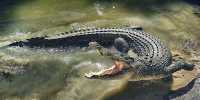For centuries, people in Europe did not really know where the birds went in the winter. It’s not their fault, they had a lot going on that prevented them from investigating the disappearance of other species.
“Where did the hero go?” When you are working on your main task of killing the plague. The basic theory that goes back to Aristotle and ancient Greece is that birds hibernate in winter, and summer redstarts turn into more winter robins in winter, and garden warblers turn into blackcap warlords.
As foreign as these theories were, it was somehow better than other theories, such as the 17th-century English scientist Charles Morton who believed that they flew to the moon for the winter, flying at 201 kilometers (125 miles) per hour for 60 days. Per hour).
To be fair to him, why bother to discover things through empiricism in a century where you can only say “Where should these creatures go, unless it were the moon?” And still maintain your position as a respected person in science. Howard still had the idea – mentioned in the Iliad at home and later discussed as an established fact of Pliny the Elder – that every year, after a long hiatus from violence, cranes would fly south with “pygmy” to continue their ongoing battle.
Pliny wrote that “pygmies” used to ride on sheep to keep people down, to attack cranes and to eat their eggs, and cranes would attack them in their heinous battles (note: don’t take the battle) birds can win a battle humanity). Suffice it to say that in the context of the mystery of where the birds go in the winter months, Europe was burning badly.
But then an explanation fell from the sky. A huge spear straight at its neck. In 1822, a white juicy spot was spotted near the village of Klitz, Germany, and hung in the shape of a spear around his neck with an explanation 76 cm long (30 inches). The spear proved to be made of African wood so that the winter sap was able to fly 3,200 kilometers (2,000 miles) across Africa before making its return journey to Germany, where it was instantly killed and filled. Through them more storks of spears were found, which the Germans called fefilstorch or “arrow sap”.
It was probably a little comforting for a severely injured bird, but only made an epic journey to death upon arrival, proving a small theory of the time about migration, and taking the pure fact that they had just jumped into another bird. For the new season.














